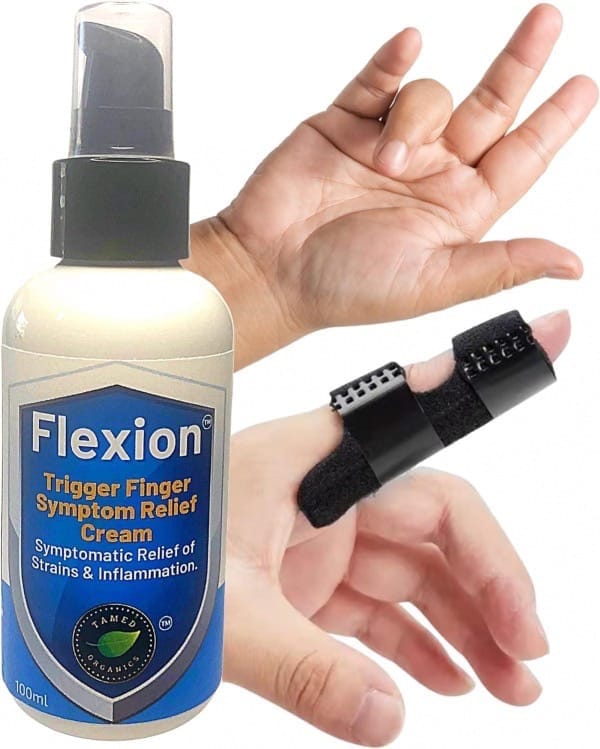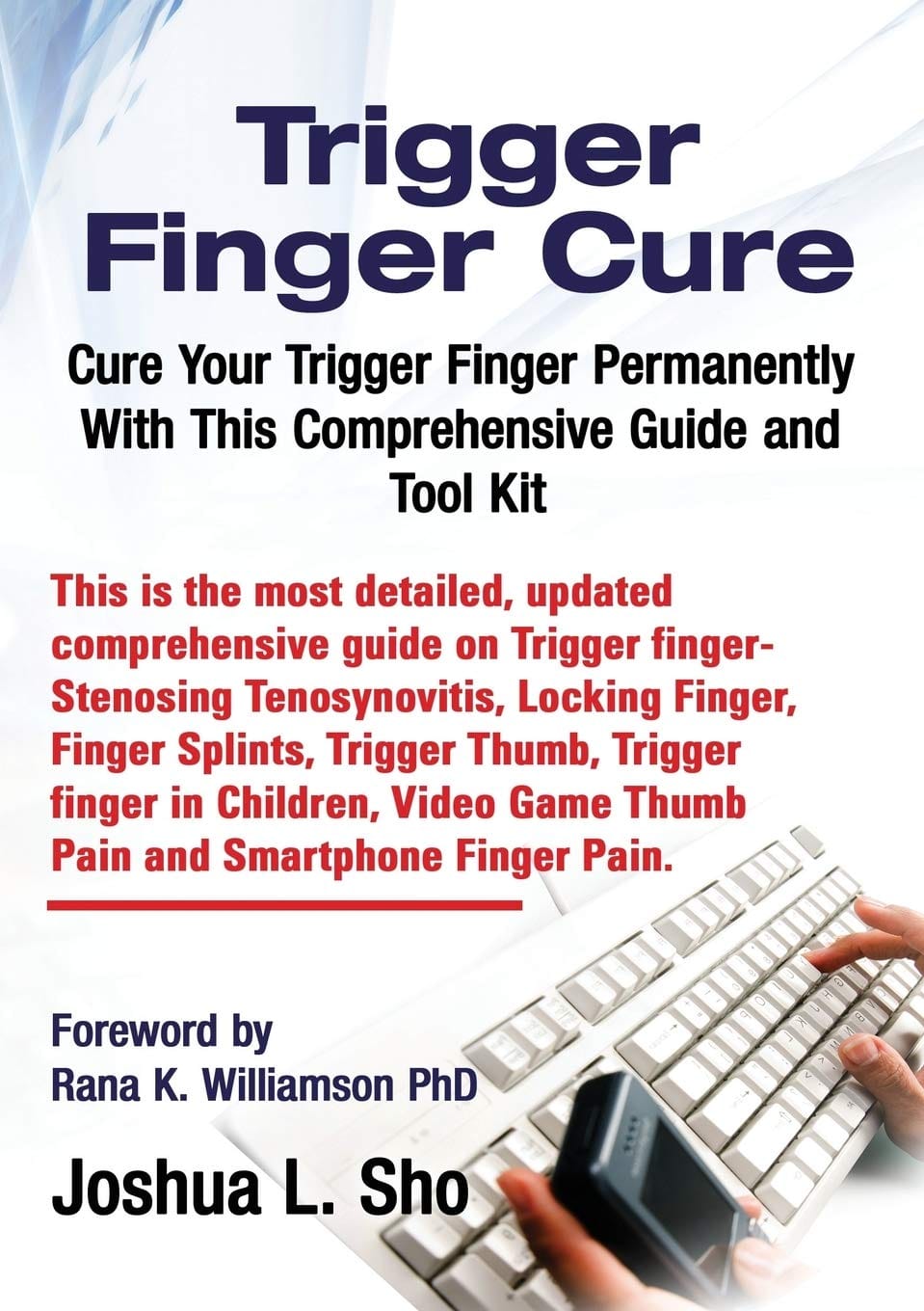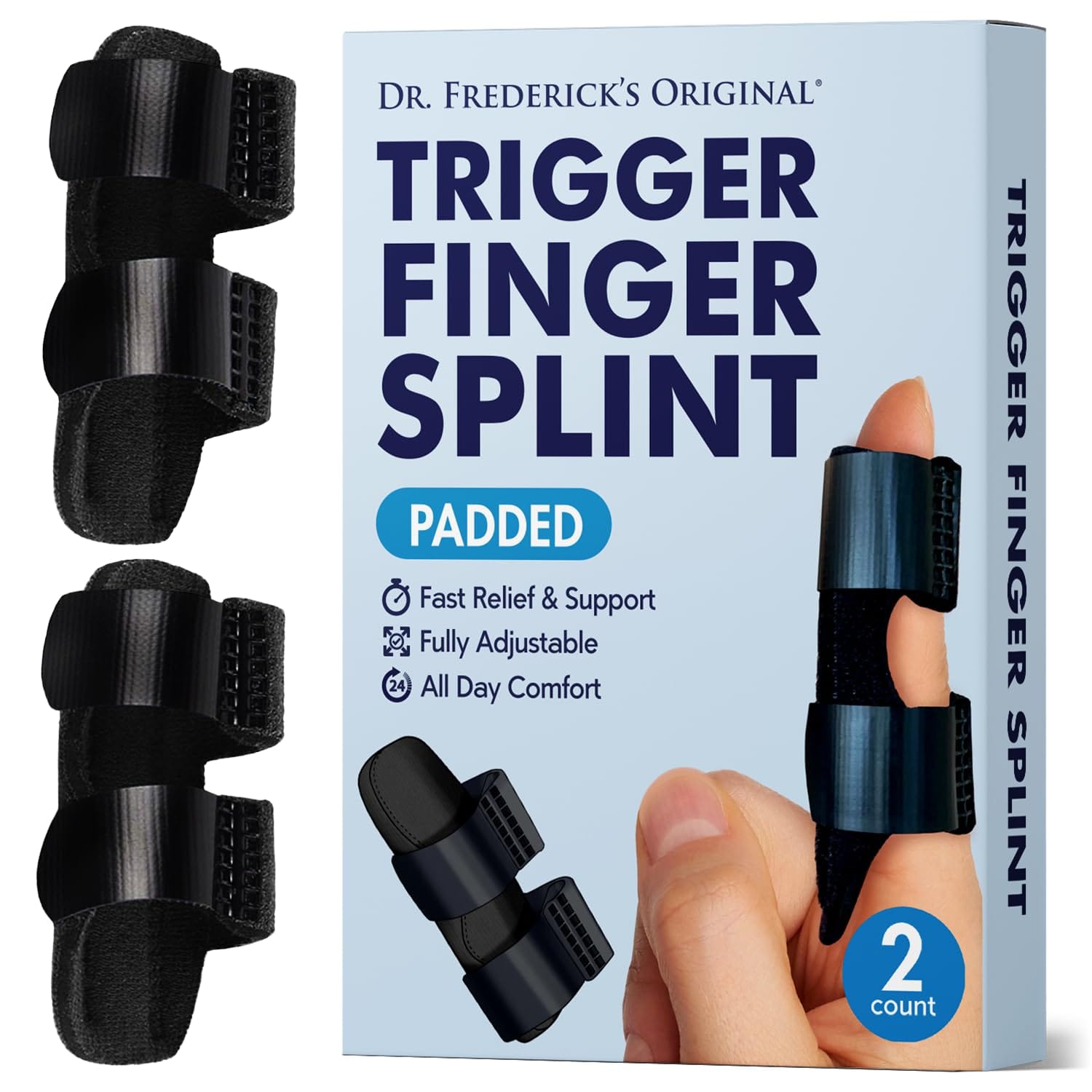Unraveling the Fingers: An In-depth Look into Trigger Finger Disease
Do you often feel a painful stiffness in your finger when you try to bend or straighten it? Let's explore what Trigger Finger Disease is.

=Do you often feel a painful stiffness in your finger when you try to bend or straighten it? This could be a sign of Trigger Finger Disease, a condition that can cause severe discomfort and even disability in the hand. But don't worry, understanding the issue is the first step to solving it. Let's explore what Trigger Finger Disease is, what symptoms to look out for, and the anatomy of how it is caused.
Note: This article does contain affiliate links. We may earn a commission at no extra cost to you.
What is Trigger Finger?
Trigger Finger Disease, also known as stenosing tenosynovitis, is a common condition that affects the flexor tendons in the fingers and thumb. It is characterized by a painful clicking or locking sensation when attempting to straighten or bend the affected digit(s). This condition arises due to inflammation and thickening of the tendons or their protective sheaths.
Who Can Benefit From This Article?
This article is of particular benefit to a wide array of readers. It serves as a vital resource for individuals who are experiencing symptoms of Trigger Finger Disease, helping them to better understand their condition and explore deeper information. In addition, caregivers or family members of affected individuals can also gain from this information, as it provides a comprehensive overview of the disease, enabling them to offer better support and care. Moreover, professionals in the healthcare sector, such as physicians, physiotherapists, and occupational therapists, can utilize this article as a quick refresher or reference guide about the condition. Lastly, anyone interested in health topics and potential products associated with Trigger Finger can also be informed in this reading.
Overview of its Prevalence and Impact on Individuals
Trigger Finger Disease is a widespread condition that affects people across various age groups and occupations. While it can occur at any age, it most commonly affects individuals between 40-60 years old. Women are more frequently affected than men. The prevalence of trigger finger disease varies depending on different factors such as occupation and underlying medical conditions. Occupations requiring repetitive hand movements, such as assembly line workers, musicians, farmers, or office professionals who spend prolonged periods typing on keyboards are at higher risk. The impact of trigger finger disease on individuals can be substantial. The discomfort and pain associated with this condition often limit hand function and affect daily activities such as grasping objects firmly or performing intricate tasks requiring fine finger movements. In severe cases, trigger finger disease can significantly interfere with one's ability to work or engage in hobbies, impacting overall quality of life.
Understanding the Anatomy and Mechanics
To grasp a comprehensive understanding of trigger finger disease, it is imperative to delve into the intricate anatomy of our fingers. Our fingers are composed of several components, including bones, joints, tendons, muscles, and ligaments. Tendons play a crucial role in finger movement by connecting muscles to bones. They act as strong fibrous cords that transmit the force generated by our forearm muscles to articulate our fingers. The tendons responsible for finger flexion run through a series of fibrous tunnels known as pulleys. These pulleys create a supportive framework for proper tendon function and ensure efficient gliding during finger movement. The most important structure among these pulleys is the A1 pulley located at the base of each finger near the palm.
Role of tendons in finger movement and their connection to muscles
The coordinated movement of our fingers is achieved through an intricate interplay between tendons and muscles. When we decide to perform a voluntary finger flexion or extension, signals from our brain activate specific muscles in our forearm known as flexor or extensor muscles. These muscles contract, generating tension that is transmitted through their respective tendons. As these contracting forearm muscles exert force on the attached tendons, they pull them towards the palm (flexion) or opposite direction (extension). This mechanism results in bending or straightening actions at various joints within our fingers. It is important to note that multiple tendons work together harmoniously to accomplish smooth and precise movements.

Trigger Finger Finger Brace, Splint, Brace Relief Kit with Flexion Trigger Finger Relief Cream Flexion
Links included in this list contain affiliate links, and if a purchase is made through them, we may receive a commission that helps to support our blog.
What Causes Trigger Finger?
Repetitive hand movements are widely recognized as one of the primary causes of trigger finger disease. When certain activities are performed repetitively, such as typing or playing musical instruments like piano or guitar, excessive strain is placed on the tendons in the fingers. The tendons undergo repetitive friction within the pulley system, which can lead to irritation and inflammation. Over time, this constant stress weakens the tendon structure, resulting in thickening and enlargement of the affected tissues.
Note: We do have affiliate links throughout the site and we do earn a commission at no extra cost to our reader.
Explanation of How Repetitive Motion Can Lead to Inflammation in Tendons
When we engage in repetitive hand movements, our tendons experience repetitive micro-traumas that gradually accumulate over time. These micro-traumas cause tiny tears in the tendon fibers and trigger an inflammatory response from our body's immune system. In response to this repeated trauma, cells called fibroblasts rush to the site of injury and begin producing excess collagen. This excess collagen accumulation leads to thickening and narrowing of the tendon sheath, impeding smooth gliding motion within it. Furthermore, when inflamed tendons pass through tight pulleys during finger movement, increased friction occurs due to reduced lubrication. This combination of inflammation and increased friction further exacerbates irritation within the tendon sheath. As a result, pain and discomfort ensue while extending or flexing fingers.

For a more concise understanding, we linked a book below from Amazon that provides more detail on the condition and can be a great resource for curious readers.
Affiliate Disclosure: This article may contain affiliate links, which means we may receive a commission on any sales of products or services we write about. This will be at no extra cost to you. Please note that we only recommend products or services that we believe will be beneficial to our readers. Our primary goal is to educate and inform, and we believe in honest and transparent business practices.

Trigger Finger Cure: A Comprehensive Guide and Toolkit for Trigger Finger
Other Potential Causes and Risk Factors
Rheumatoid Arthritis and Other Inflammatory Conditions Affecting Joints
Trigger finger disease can also manifest in individuals with pre-existing inflammatory conditions affecting joints, such as rheumatoid arthritis. In these cases, the chronic inflammation associated with the underlying condition can adversely affect the tendons in the fingers. The inflamed synovial tissue surrounding the joint can extend into the tendon sheath, leading to thickening and constriction. Consequently, trigger finger symptoms may present themselves alongside other joint-related symptoms seen in rheumatoid arthritis patients.
Diabetes Mellitus as a Predisposing Factor
Studies have shown that individuals with diabetes mellitus have an increased susceptibility to trigger finger disease compared to those without diabetes. The exact mechanism behind this association remains unclear; however, it is believed that high blood sugar levels may contribute to changes in collagen structure within tendons and impair their normal function. Diabetic patients often experience alterations in blood flow and nerve function, which can affect tendon health and make them more vulnerable to inflammation. It is important for healthcare providers to consider these potential causes and risk factors when evaluating patients presenting with symptoms of trigger finger disease. By recognizing the various contributing factors, appropriate preventive measures can be implemented to reduce the occurrence of this condition among at-risk populations.
Common Symptoms Experienced by Individuals with Trigger Finger Disease
Individuals suffering from trigger finger disease often encounter a range of distressing symptoms that can greatly affect their hand functionality and overall quality of life. One of the most prevalent symptoms is a painful clicking or popping sensation when attempting to move the affected finger(s). This alarming sensation occurs as the inflamed tendon attempts to glide through the narrowed pulley, causing it to catch and suddenly release. The discomfort associated with this clicking sensation can vary in intensity, ranging from a mild annoyance to severe pain that inhibits daily activities.
In addition to the clicking or popping, individuals may experience stiffness or an inability to fully extend or flex the affected digit(s). This diminished range of motion arises from the inflammation and thickening of tendons within the sheath. As a result, bending or straightening the finger becomes challenging and often accompanied by discomfort. Simple tasks like grasping objects or typing on a keyboard can become arduous endeavors due to this limitation. Another characteristic sign of trigger finger disease is the development of a visible nodule or bump near the affected tendon sheath. These nodules are typically located near the base of the finger where flexor tendons join with muscles in order to control movement. The presence of these nodules indicates an accumulation of scar tissue resulting from chronic inflammation. They can be tender when touched and are more noticeable during finger movement.

Recommended Products For Trigger Finger
Firstly, please consult with your healthcare provider before starting any new treatment or therapy on your own. Links included in this list contain affiliate links, and if a purchase is made through them, we may receive a commission that helps to support our blog. This does not impact our recommendations, which are based on thorough research.

Dr. Frederick's Original Trigger Finger Splint - 2ct - Mallet Finger Splint - Finger Brace for Arthritis, Injury, Sprain - Fits Index, Middle, & Ring Finger Pain
FDA Disclaimer: This article is intended for informational and educational purposes only. It is not intended to replace professional medical advice, diagnosis, or treatment. If you have any health concerns or questions regarding Trigger Finger Disease, please consult with a healthcare professional. The Food and Drug Administration (FDA) has not evaluated the treatment options mentioned within this article. The information and other content provided in this article, or in any linked materials, are not intended and should not be construed as medical advice.
Key Takeaways
While trigger finger disease may cause discomfort and inconvenience in individuals' lives, there is an array of effective non-surgical treatment options available for managing this condition successfully. Resting the affected hand/finger(s) allows for inflammation reduction and promotes healing without further strain on the tendons involved. Applying ice packs or warm compresses provides pain relief by reducing swelling and improving blood circulation. Hand exercises play a crucial role in enhancing flexibility, strength, and proper tendon function. By adopting these non-surgical approaches, individuals can mitigate symptoms and find relief from trigger finger disease, empowering them to engage in daily activities with increased ease and comfort. Remember that with proper care and adherence to recommended treatments, improvement is often attainable, leading to a brighter outlook for those affected by this condition.




